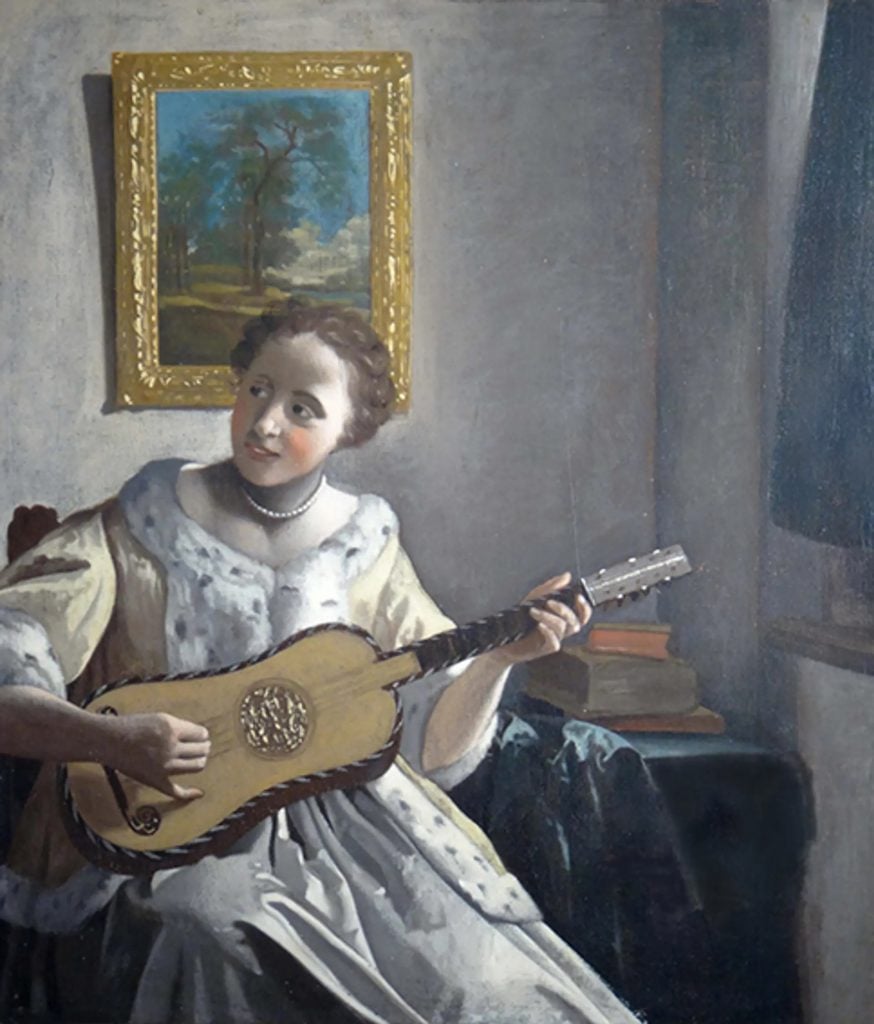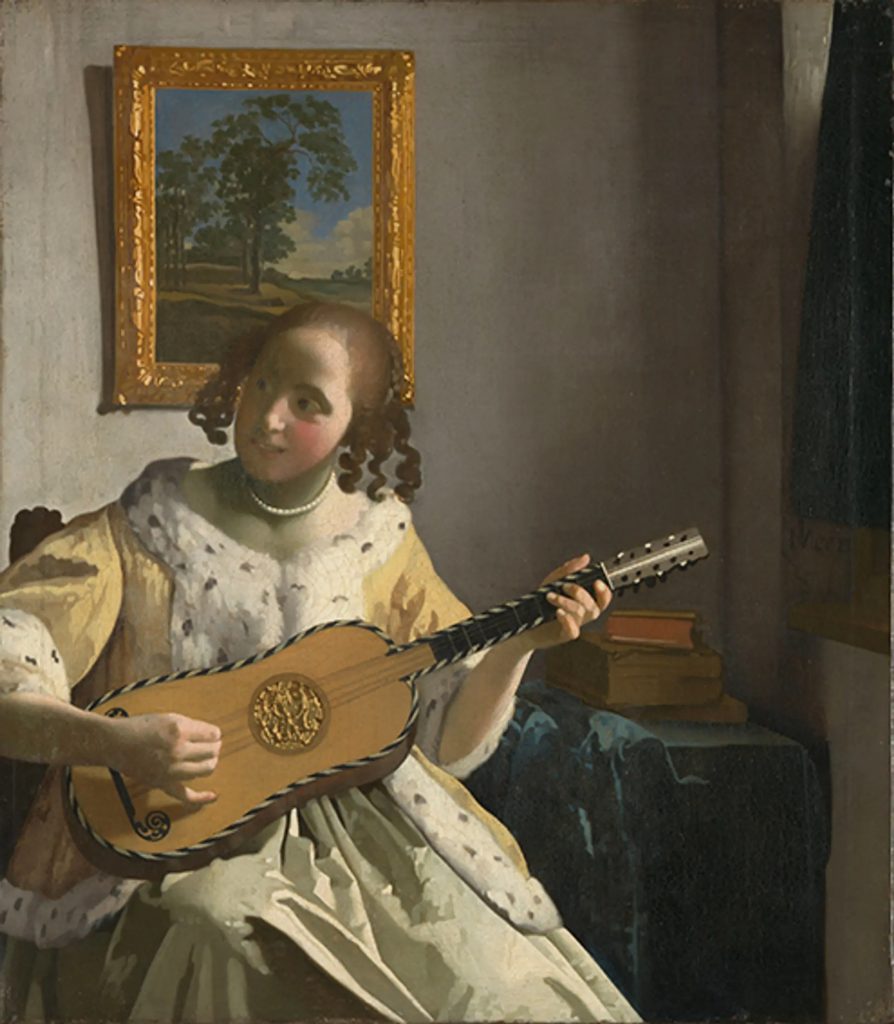Museums & Institutions
An Art Expert Has Made a Startling Claim: The Philadelphia Museum of Art’s Vermeer Copy May Actually Be the Real Thing
The version of the work at London's Kenwood House has long been accepted as the original.

The version of the work at London's Kenwood House has long been accepted as the original.

Sarah Cascone

A possible new addition to the oeuvre of Johannes Vermeer, the famed Dutch Golden Age master for whom there are believed to be only 37 known works, may have been hiding in plain sight in the collection of the Philadelphia Museum of Art.
The institution has owned the work in question, titled Lady With a Guitar, since 1933, but has never exhibited it. Experts had downgraded it to the status of a late-17th-century Vermeer copy after a nearly identical painting, titled The Guitar Player, appeared in 1927.
That assumption has been challenged by Arie Wallert, a former scientific specialist at the Rijksmuseum in Amsterdam. Based on the work’s pigments, Wallert made a case for the Philadelphia painting’s authenticity in a presentation during a symposium held last week at the Rijksmuseum on the occasion of “Vermeer,” the most complete showing of the artist’s work ever assembled. (It brings together 28 of his paintings.)
The so-called copy is in fact “a painting by Vermeer,” he argued.

Johannes Vermeer, The Guitar Player (ca. 1672). Collection of Kenwood House, London.
“The future of Lady With a Guitar will be to inspire discussion, embracing scholarship, and to seek more knowledge and enlightenment from this mysterious painting nearly 350 years after its creation,” Philadelphia Museum director Sasha Suda told the Art Newspaper, which first reported on the possible new Vermeer.
In a lecture titled “The Guitar Player: A Very Sad Story,” Wallert offered a technical analysis of the Philadelphia painting, which he admitted is in a “shocking” state, with considerable surface damage and a tear on the lower right portion of the canvas. The work came from the collection of John Johnson, a Pennsylvania lawyer who died in 1917. Prior to that, records show that it was part of the Cremer collection in Brussels in the 19th century.
“The painting has remained in stable condition since the Johnson Collection came under the care of the museum in the 1930s, although prior conservation efforts, sadly, had left the painting in a highly compromised state,” Suda told the Philadelphia Inquirer.
But while the work was likely damaged by a poorly conducted cleaning at the time of its acquisition, Wallert believes the paints themselves suggest Vermeer’s authorship.
There’s the expensive ultramarine Vermeer favored, as well as lead-tin yellow, which was only used until about 1700. The pigments in Lady With a Guitar were used in “combinations that nobody else used at the time,” Wallert said.
Wallert also compared the compositions of the two versions of the work, which differ only in the girl’s hairstyle—loose curls in The Guitar Player, compared to pulled back in Lady With a Guitar. He did not offer any possible explanations for that change, but suggested that both canvases were based on a single preparatory drawing.
The accepted version of the composition, The Guitar Player, is in the collection of London’s Kenwood House. It is considered too fragile to travel, which is why it is one of the few works that did not make the trip for the artist’s sold-out blockbuster at the Rijksmuseum.

Johannes Vermeer, Girl with a Flute (ca. 1669–75). Collection of the National Gallery of Art, Washington D.C.
Interestingly, the show does include a painting that is no longer universally accepted as an autograph Vermeer. Last fall, the National Gallery of Art in Washington, D.C., determined that Girl With a Flute (1665/1675) was likely the work of Vermeer’s studio, not the artist himself. (It was an especially interesting assertion given the lack of previous evidence that the artist had studio assistants.)
The Rijksmuseum disagreed with that assessment and kept the work in the show, where it is displayed as an original Vermeer.
“Vermeer” is on view at the Rijksmuseum, Museumstraat 1, Amsterdam, February 10–June 4, 2023.